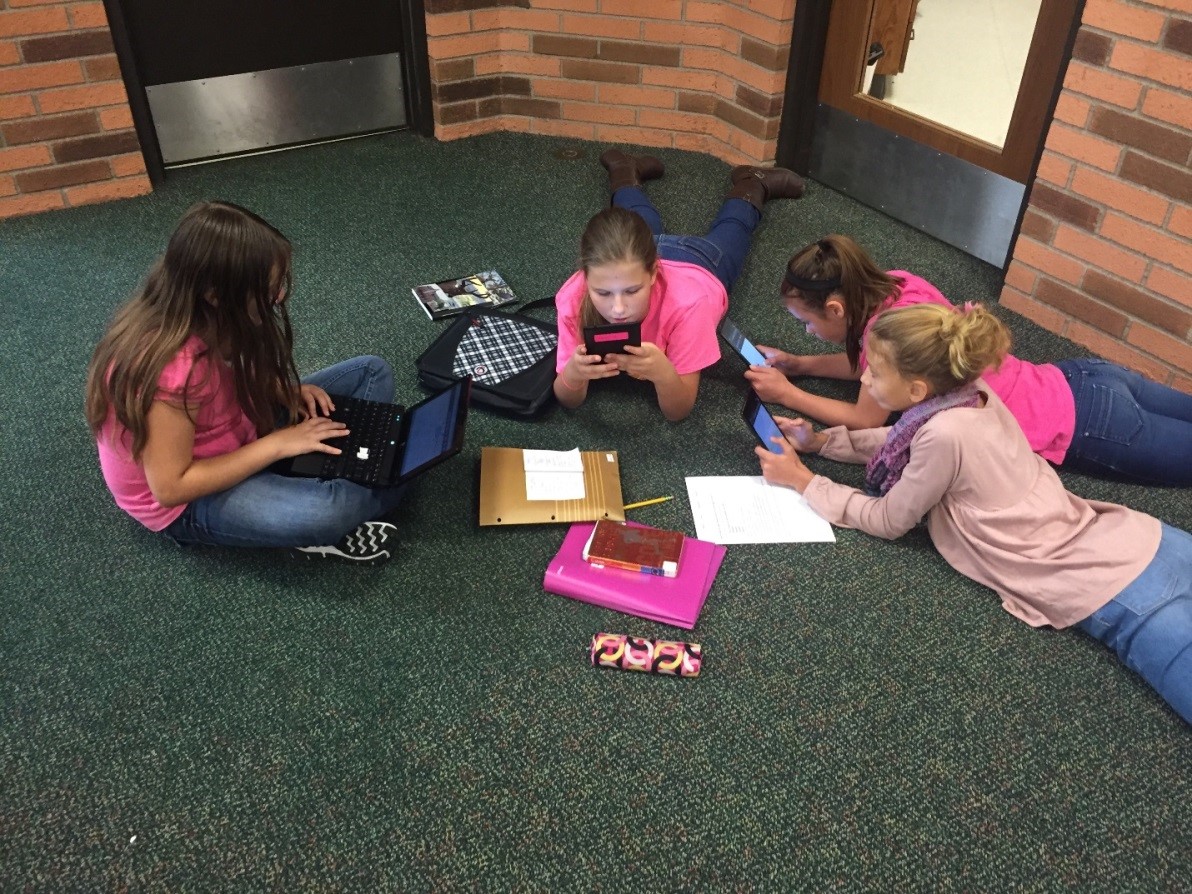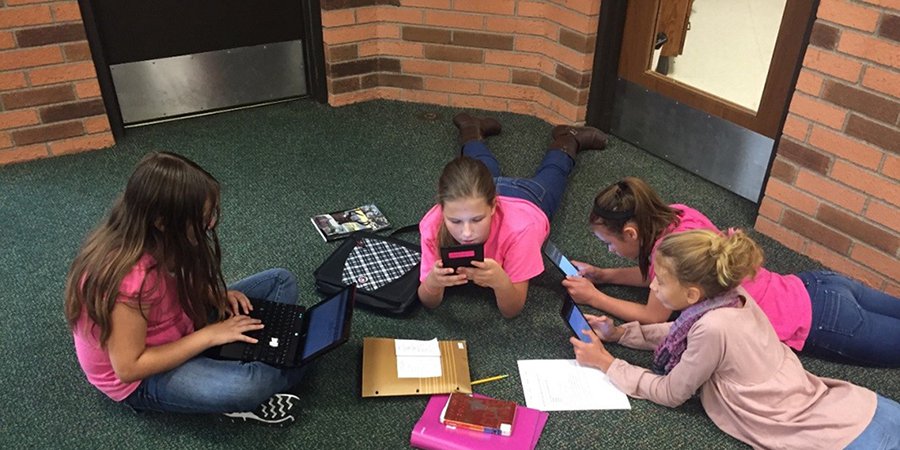While the term “Web 2.0” is a tad tired now, it signaled a major change in how the Internet was being used: Web 1.0 was about reading stuff, with the web simply being a repository for information (albeit multiple media stuff) but Web 2.0 was about communication. This was a huge change! For example, Facebook has been totally transformative. Diving a bit deeper, the style of Web 2.0 communication could be termed “asynchronous” collaboration. That is, an individual would make a post and then another individual, or individuals, would respond to that post, accumulating a conversation, in effect.
However, with high-speed Wi-Fi and with 4G being virtually ubiquitous in the cellular space, and with smartphone, tablet, and laptop ownership hitting saturation levels, a new style of communication is now on offer: synchronous collaboration. That is, two or more individuals, conversing verbally, while working together, co-creating or co-editing an artifact. The Google Docs Editor is the Grandmother application for Social 3.0. Indeed, using the Google Docs Editor for the first time was invariably a jarring experience – wait a second, where are these letters and words appearing on my screen coming from? By now, however, we are becoming more comfortable with Social 3.0 services, e.g., hit the Mayday button on an Amazon Fire device and a sales-support person will pop up and help you navigate and hopefully spend on, Amazon’s mega-site. Google’s collabrified offerings have expanded and Microsoft’s Office 365, too, offers support for synchronous collaboration.
It’s not a big leap to make the following prediction: in 3-4 years virtually every website and virtually every mobile app will be “collabrified” – will support synchronous collaboration. Why will that happen? Collabrification is just an example of Andreesen’s observation that: “… technology wants it to happen”. Indeed, the underlying plumbing needed for collabrification is already here: Google has made the code underlying its suite of collabrified tools freely available to developers; and if you don’t want Google – some of our European colleagues worry about Google’s voracious data collection habits – there are others that provide similar technology infrastructure.

[6th graders, using Android tablets and Windows Netbooks, in Oxford, MI., Middle School collaborating on an assignment for their English class.]
Taking advantage, then, of Google’s offerings, in the summer of 2015 and building on our experience in 2014 where we developed collabrified native, iOS and Android apps, our team, at the Intergalactic Mobile Learning Center, of young, digital cobblers created the Collabrify Suite of Productivity Apps for K-12 – free, device-agnostic (written in HTML5), core-functioned, simple-to-learn collabrified apps to support two or more students as they co-created/co-edited concept maps, KWL charts, text documents, and drawings and animations. Students use the apps when co-located, e.g., seated across from each other in a classroom or when not co-located, e.g., at their kitchen table when they are stuck on a homework problem and need a peer’s help. Remember that this means that whatever one student writes on his or her screen will appear virtually simultaneously on the other students’ screens. While still in beta, the Collabrify apps are in use by teachers and students in California, Michigan and Nevada. Be our guest: click here.
Putting the cart before the horse, PISA, the international assessment arm of OECD, has for the first time, started testing students on their collaboration skills in classrooms all around the world. We look forward to PISA publishing the scores students earned in the synchronous collaboration assessment activities. Expectations of high scores are not expected. While collaboration skills are touted as a 21st century skill, actually providing instruction and support for students as they develop collaboration skills is still nascent in most classrooms.
Collaboration’s time, vis-à-vis, education, has certainly come! It is towards exploring the issues involved in collaboration, broadly construed, e.g., synchronous collaboration, asynchronous collaboration, cooperation, social learning, then, that we initiate this series of commentaries with the Learning Counsel.
In the coming posts, we will examine the “draft” PISA standards, curriculum and apps that support the teaching and learning of collaboration, classroom experiences where collaboration is explicitly being practiced, etc. Please, if there are specific issues that you feel need to be addressed, tell us; if you have insights on collaboration, please, share them with us via the contact us page so we can take them up in future commentaries! And, if you disagree with our prediction about collabrification – let’s hear your arguments! Controversy is fun <smiley face goes here>. We will, in fact, strive to make this small window within the media world thought-provoking and fun. Thank you!
Cathleen Norris, Regents Professor, College of Information, Department of Learning Technologies, University of North Texas. Norris taught math for 14 years in the Dallas Public Schools, where she was awarded its “Golden Apple Outstanding Educator Award”. Cathie has been President of the International Society for Technology in Education (ISTE) and President of the National Educational Computing Association (NECA). Norris has given presentations on educational technology all over the world for the past 20+ years. cathie.norris@unt.edu
Elliot Soloway, Arthur F. Thurnau Professor, Department of CSE, College of Engineering, University of Michigan. In 2001, UMich undergraduates awarded Soloway the “Golden Apple Outstanding Teacher of the Year”. In 2004 and 2011, students in the EECS HKN Honor Society awarded him the “Distinguished Teacher of the Year Award.” Soloway has given presentations on educational technology all over the world for the past 20+ years. soloway@umich.edu
For more from Cathleen and Elliot, visit their Reinventing Curriculum Blog.











